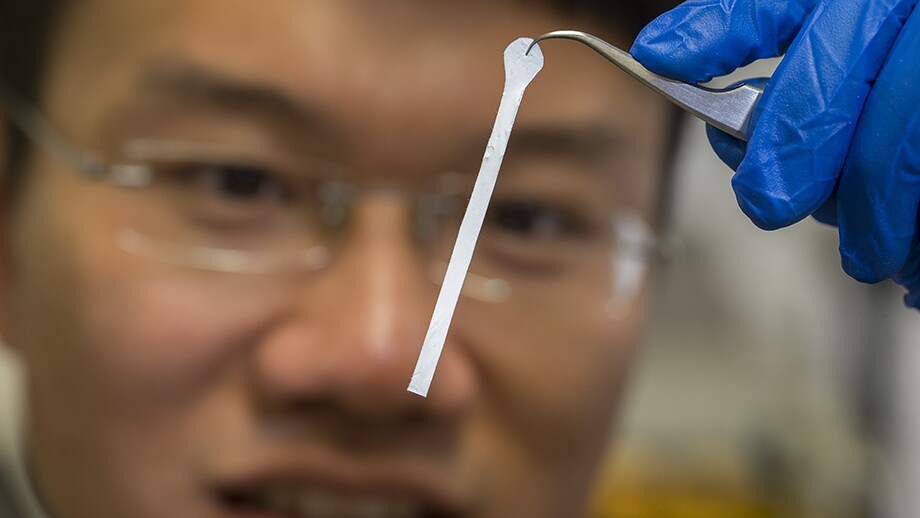When it comes to hazardous fluids, the less that researchers have to lean in close and finely manipulate them, the better. It was with this in mind that scientists at the Australian National University recently developed a new material that does something special when exposed to liquid – it rolls itself into a straw-like tube, which the liquid is then propelled through.
"If we place a drop of water at one end, the material will curl into a tube, delivering the liquid up to 15 centimetres [5.9 in] away," says William Wong, who led the research along with Associate Professor Antonio Tricoli. "This enables a rapid self-assembly of complex shapes, such as bent, curved and splitting channels, that are a building block for micro-fluidic systems."
The material itself is made up of two layers of nanofibers, sandwiched together.
The top layer, composed of polycaprolactone fibers, is superhydrophilic – this means that it's very attracted to water, and curls itself around a drop when one is applied. The bottom layer, meanwhile, is composed of superhydrophobic (water-repellant) polyvinylchloride (PVC). It serves to hold the water inside the tube as it's wicked along, essentially acting as a waterproof outside liner.

Along with being non-toxic, the material is also relatively inexpensive to manufacture, and should scale up well to large-scale production.
Possible applications include biosensors used for analyzing infectious diseases, or even micro-robotic systems. The latter of the two could be facilitated by placing tiny arms on the outside edges of the material – as it rolls up, the arms would close in, sort of like the leaves on the touch-sensitive Mimosa plant. Adding ethanol to the material causes the tube to "unroll" again.
A paper on the research was recently published in the journal Science Advances. The material can be seen in action, in the video below.
Source: Australian National University





